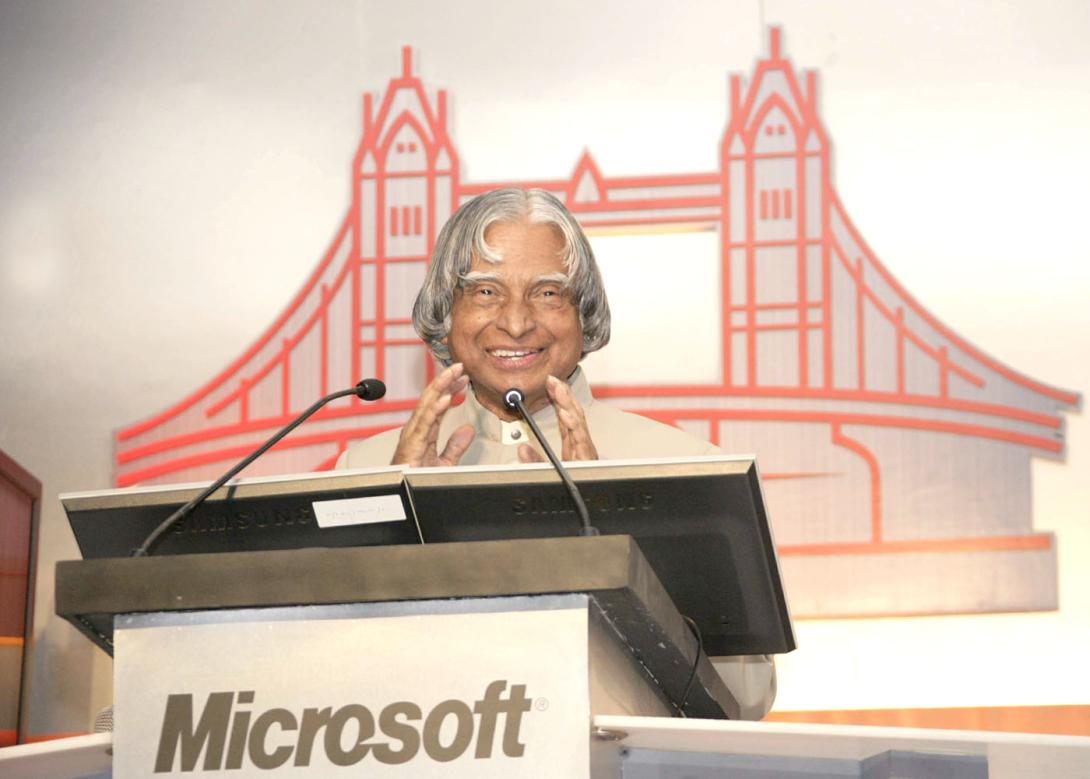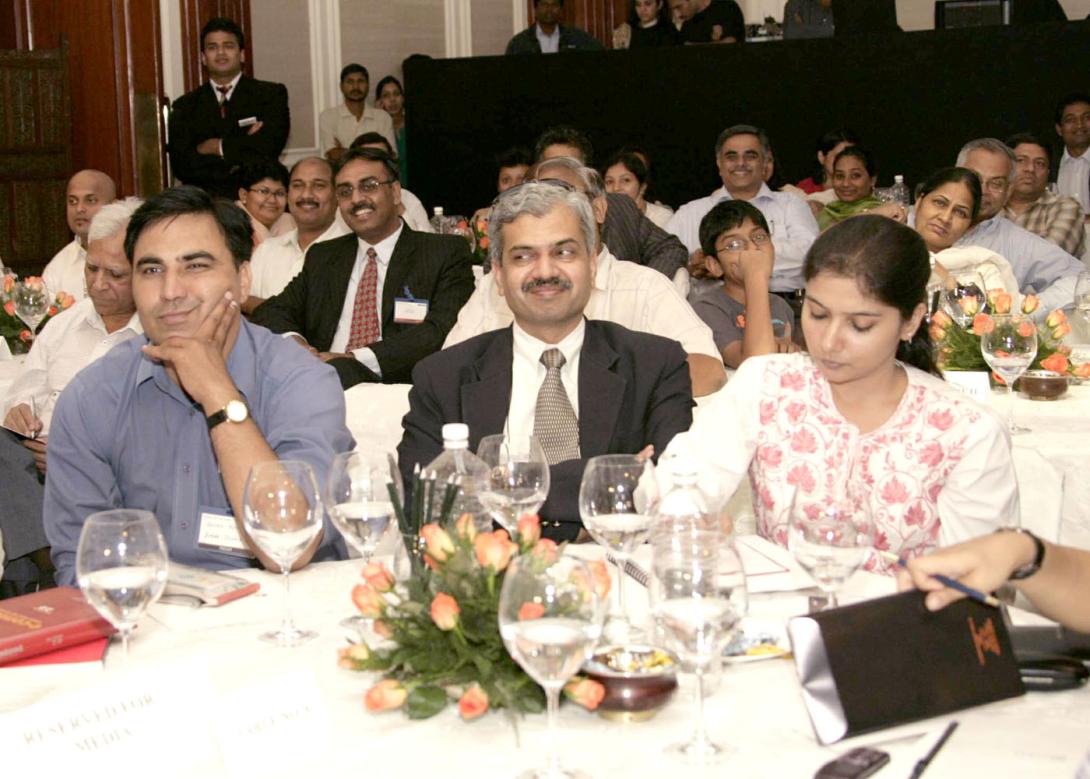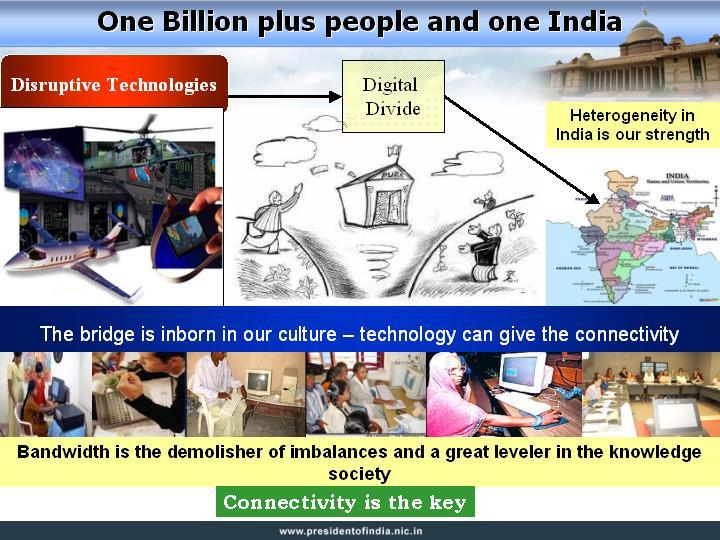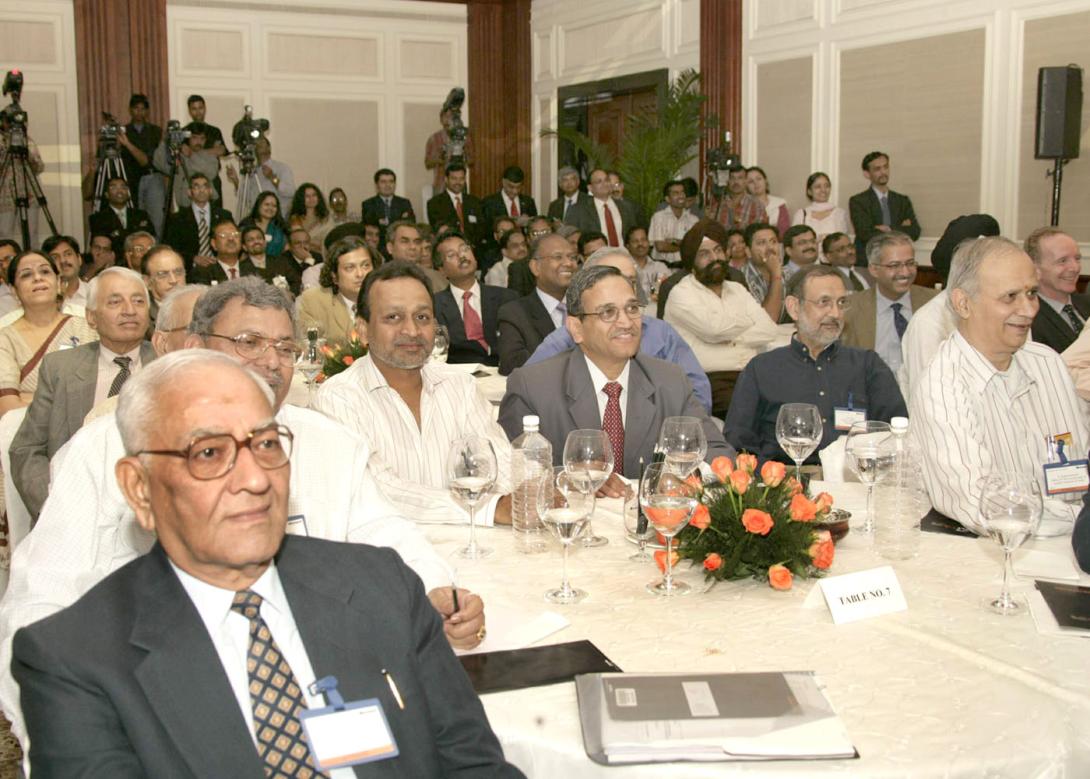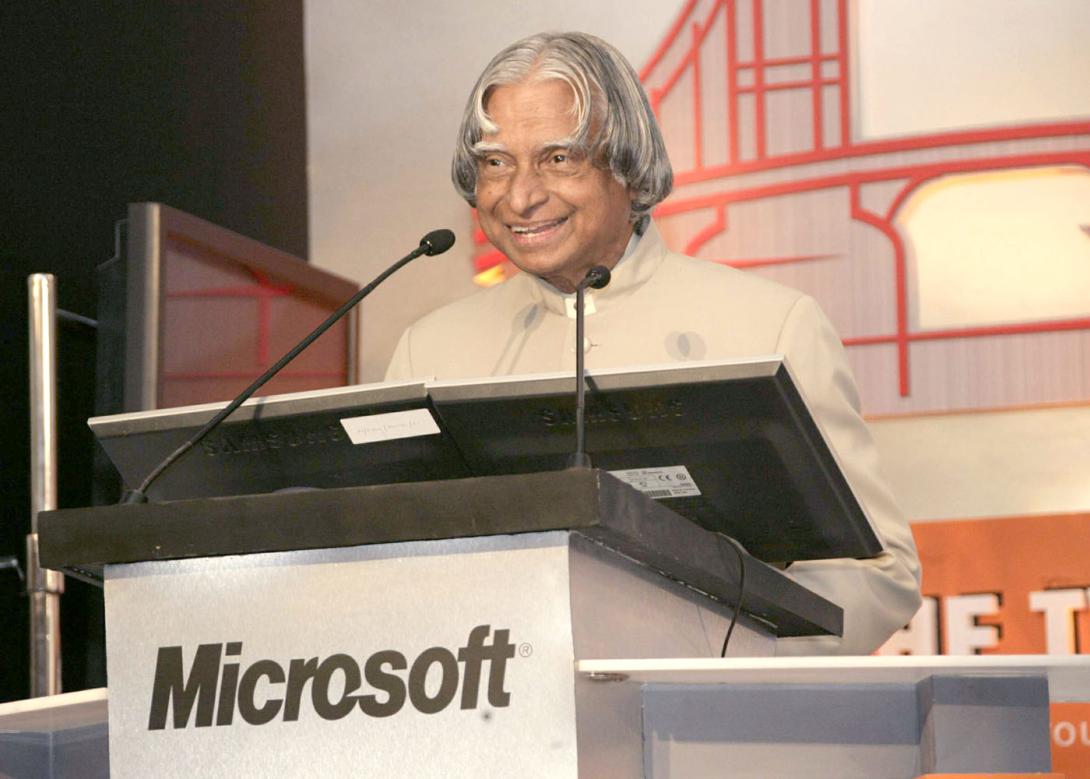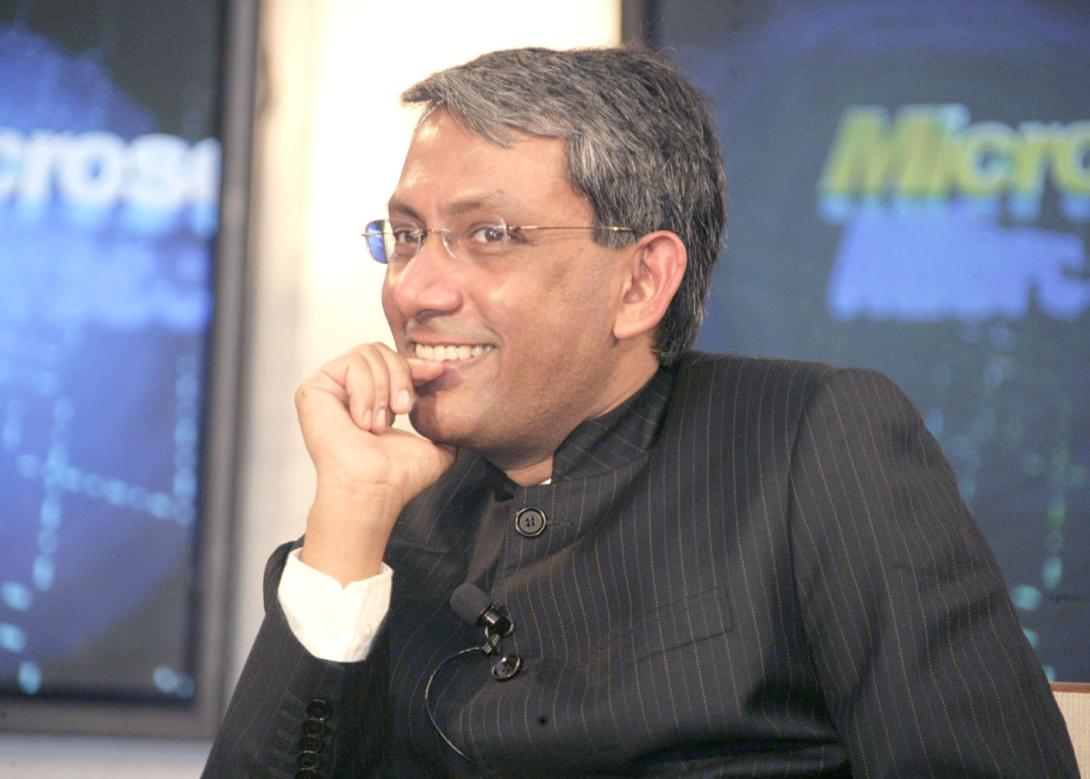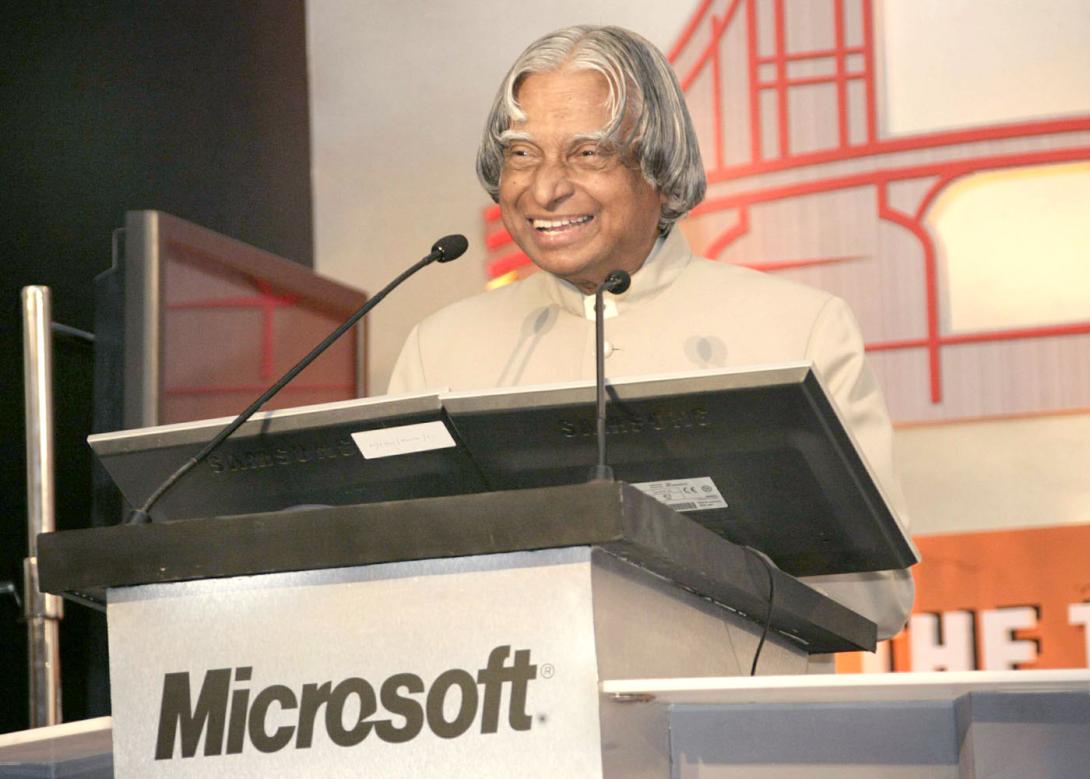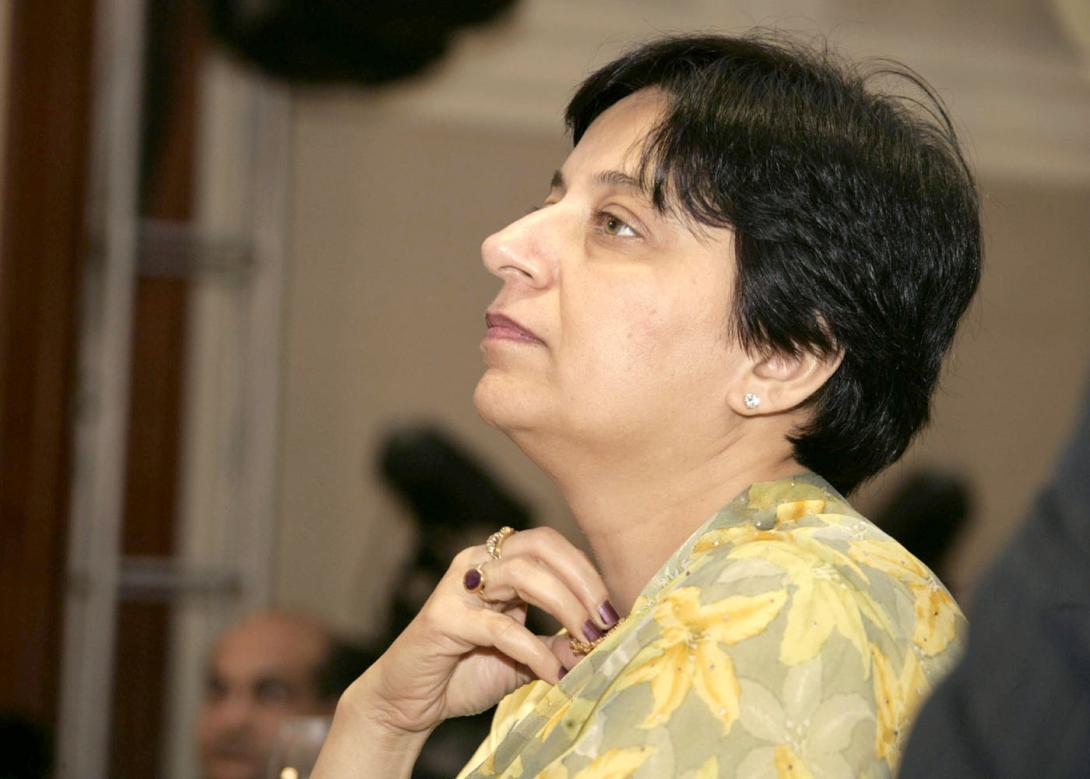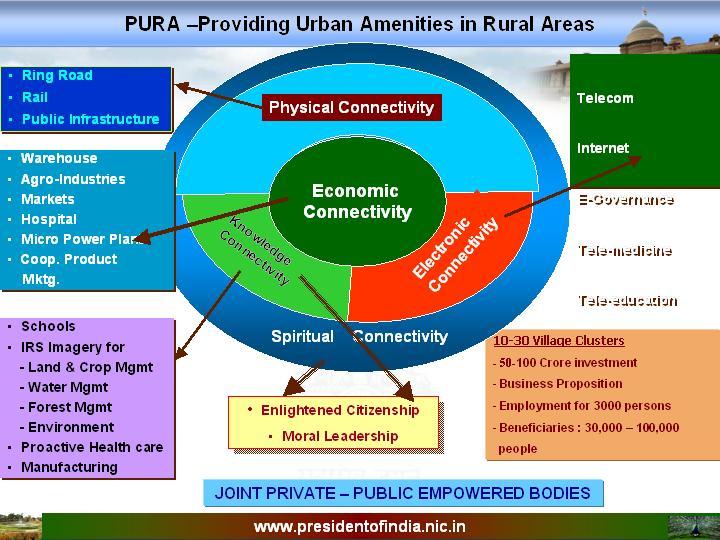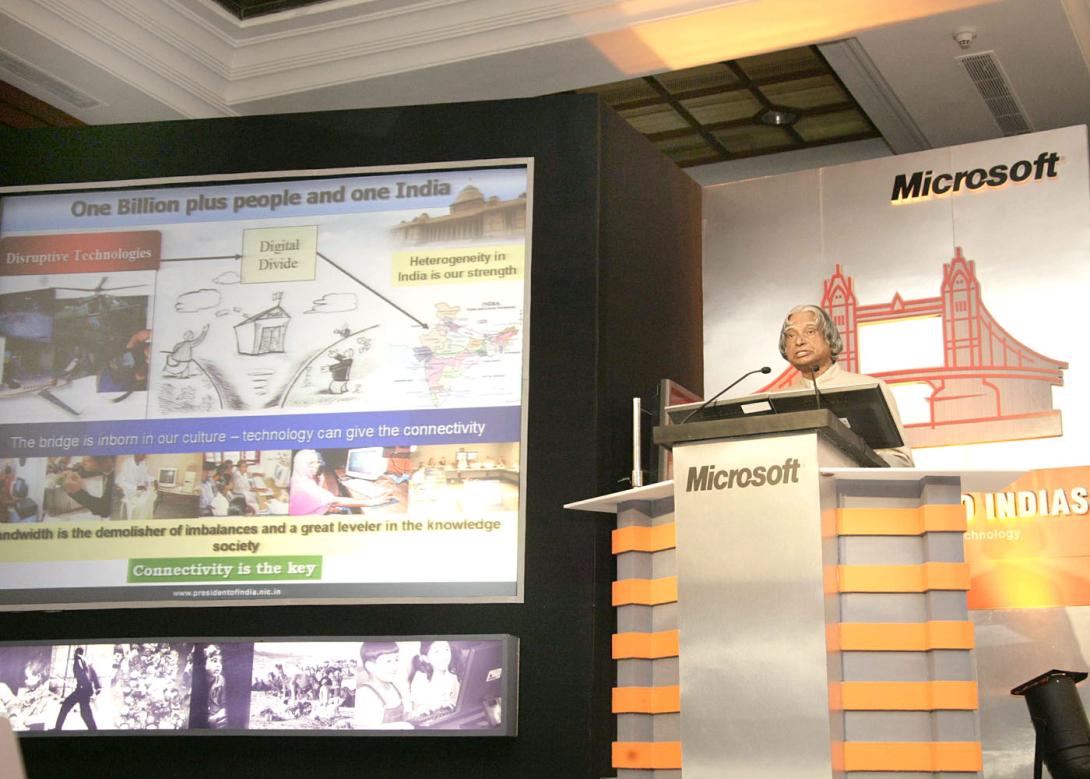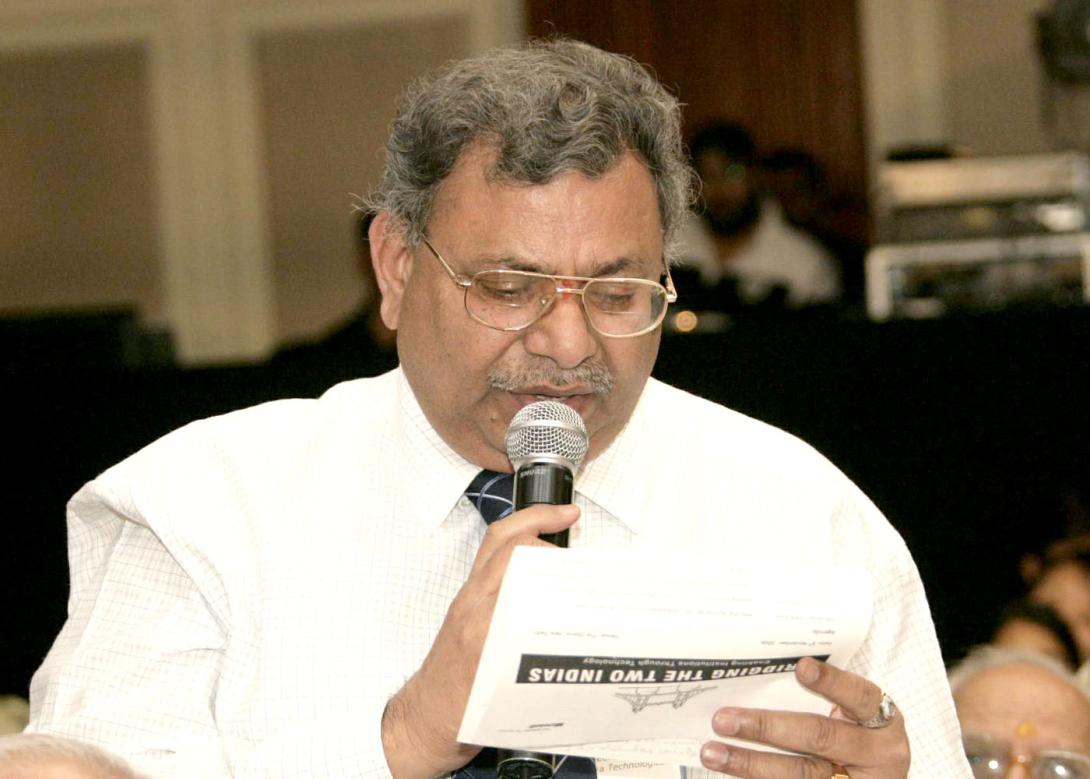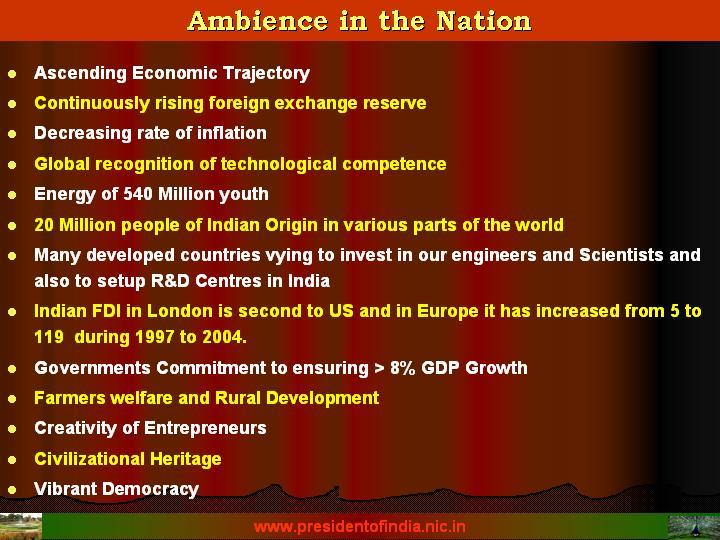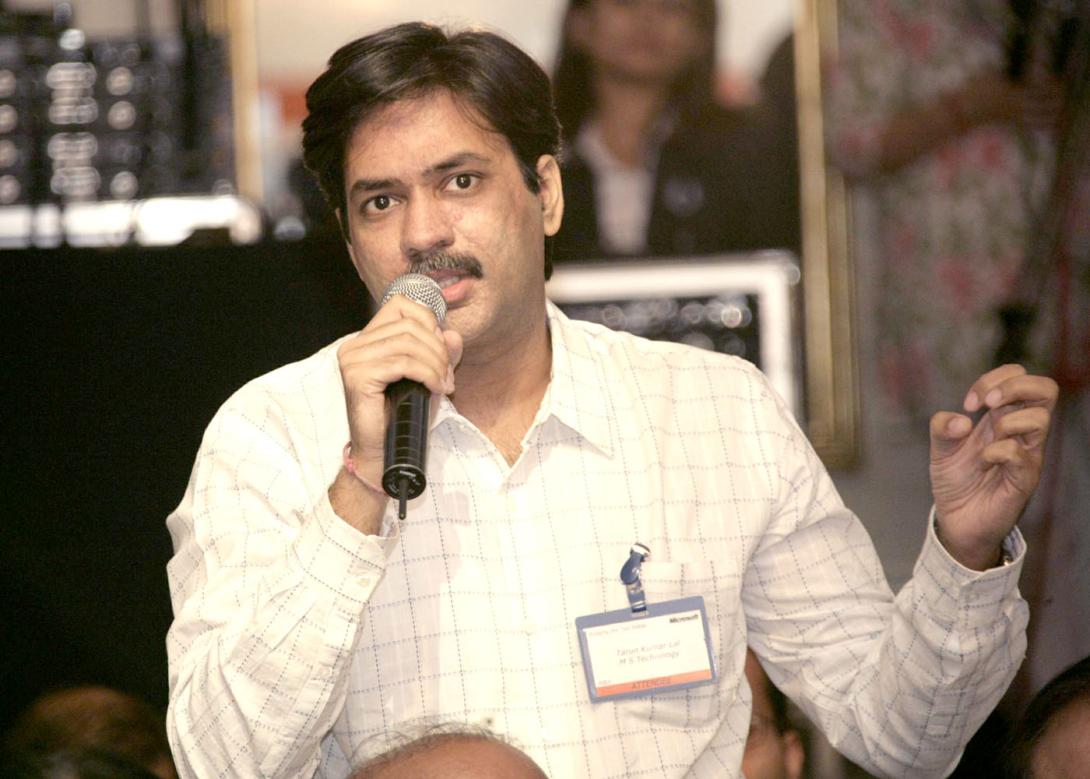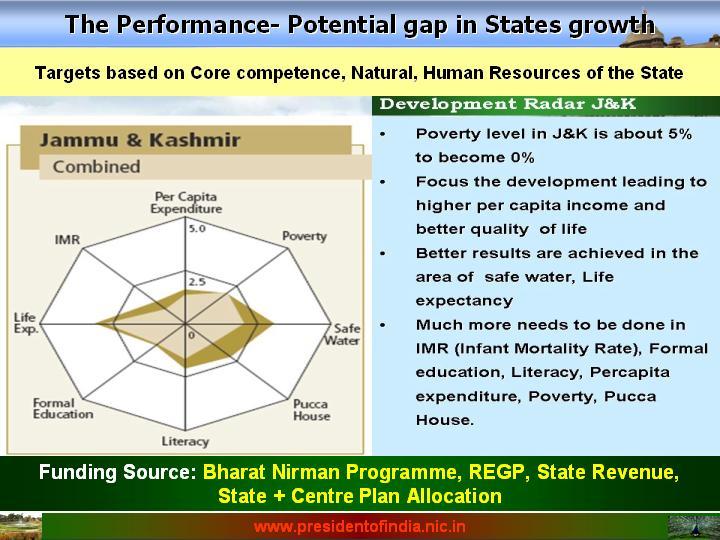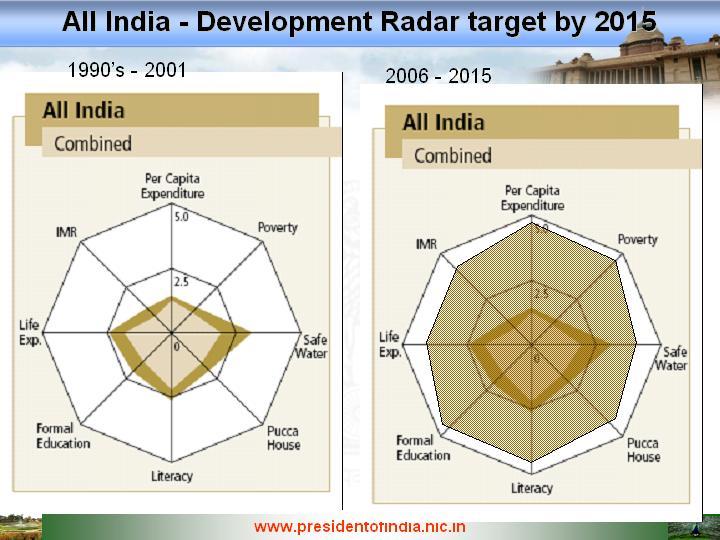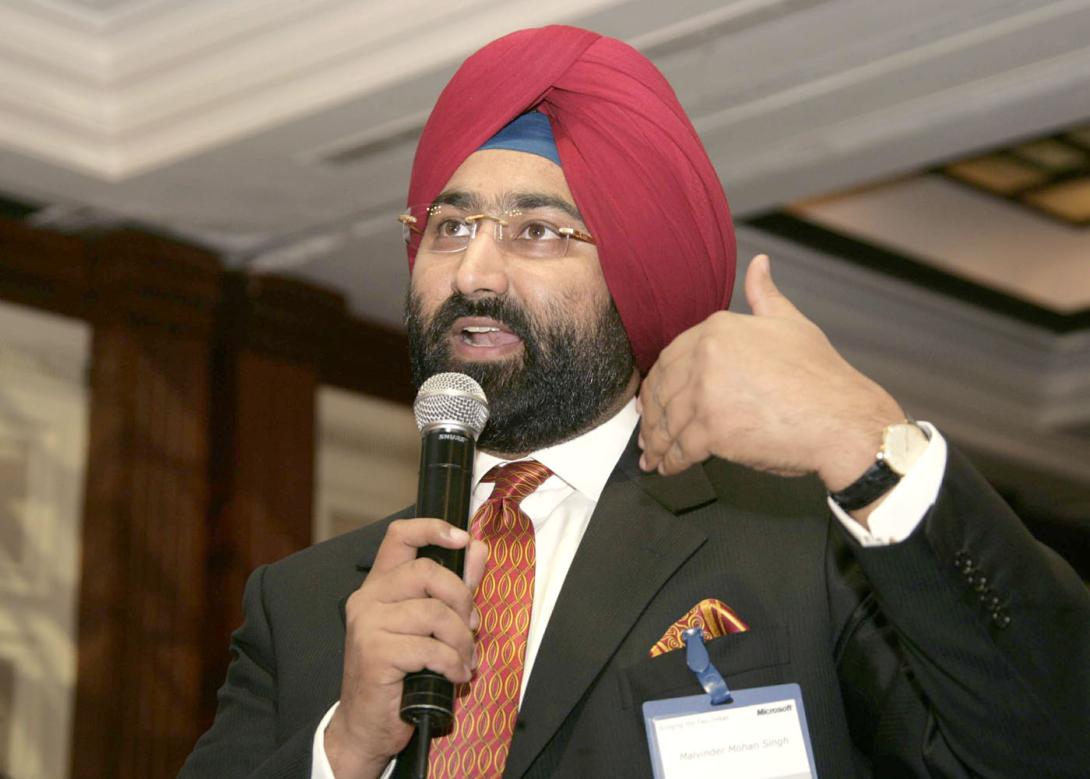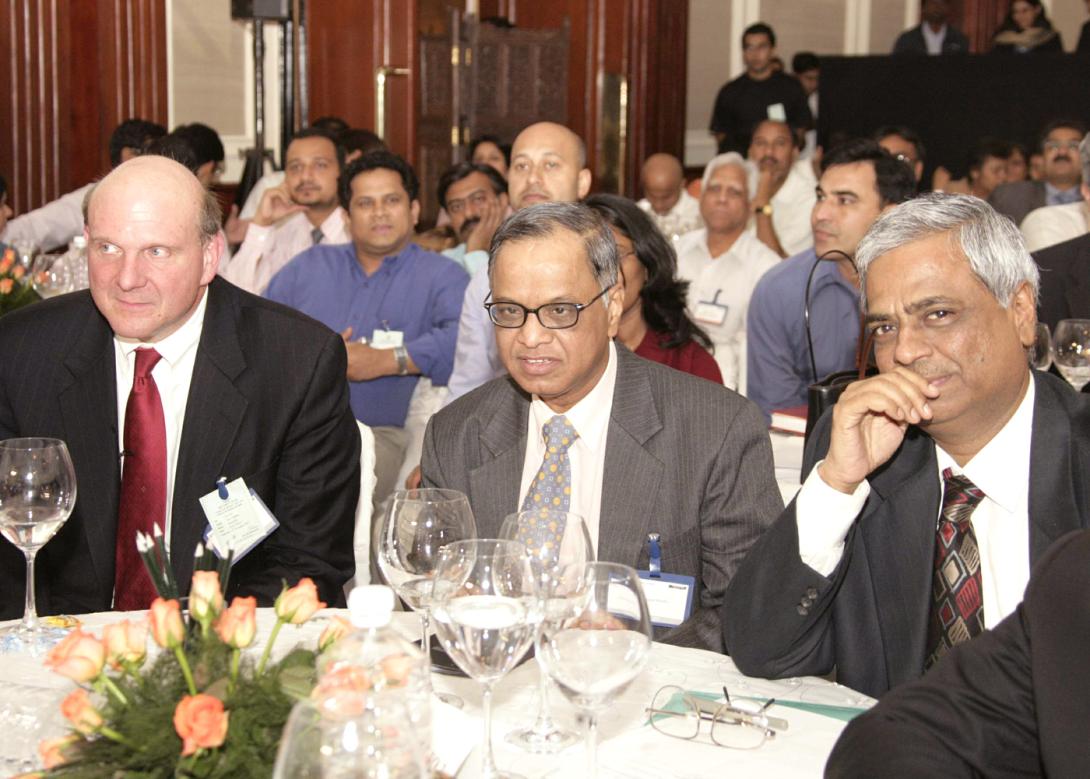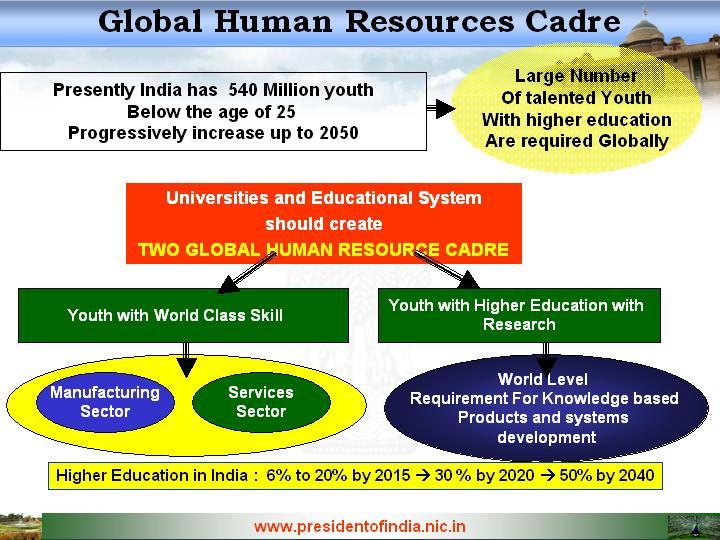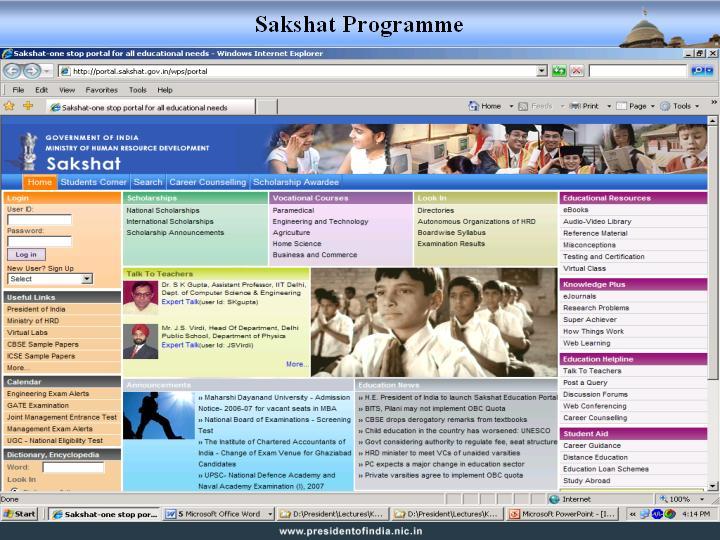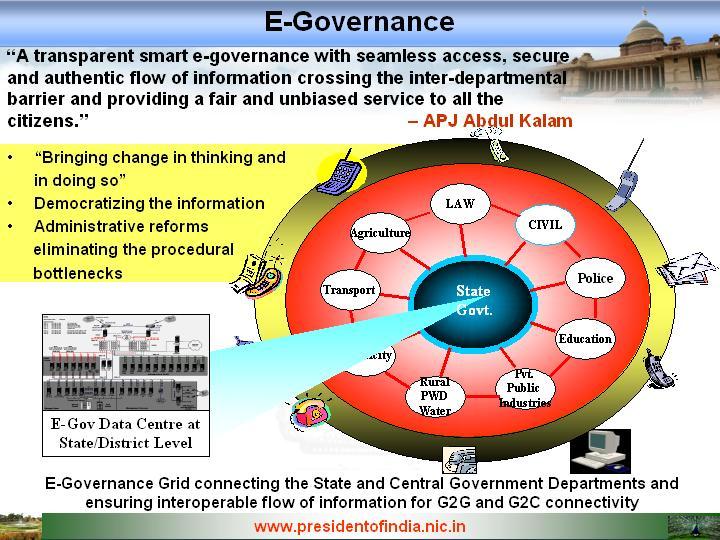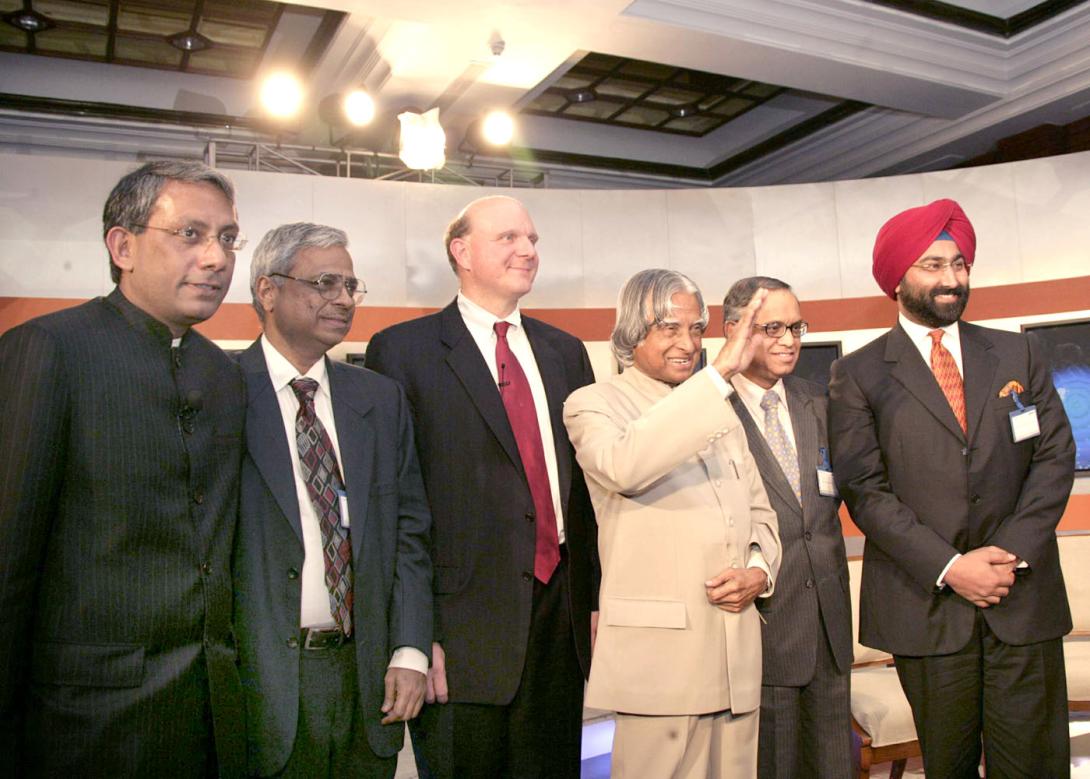Open Keynote Address at the Microsoft India Event 'bridging the Two Indians', New Delhi
New Delhi : 08-11-2006
Two hundred and twenty million people
Connectivity is the key
I am delighted to participate and deliver the keynote address on the occasion of the Microsoft India Event ?Bridging the Two Indias? thus enabling institutions through technology organized by Microsoft. I extend my greetings to the organizers, distinguished Panel members, invitees from industry, government and academia and the distinguished guests. I congratulate Microsoft India for their effort in organizing this event. I congratulate Microsoft India and the panel members for their efforts. I understand that the event will focus on appropriate technologies that can serve the nation in meeting its challenges and creates an echo system that is sustainable across the nation.
One billion plus people and one India
When I saw this title ?Bridging the Two Indias?, I am reminded of one incident; a Professor from Stanford University visited me last year. He asked me one question; ?what is the core competence of India?? My reply was, ?Professor, we got independence in 1947. Presently we are a billion plus people in the democratic India. We have got multiple languages, multiple religions, multiple culture, different socio economic conditions, varying climates and rich bio-diversity. Giving leadership to one billion people of varied characteristics and still remain a celebrated democracy is the core competence of the nation.? For those computer experts in this audience, it is like connecting a billion heterogeneous computers together to make a super computer. But today the main focus has to be in uplifting 220 million people who are living below poverty line. Hence my topic of discussion today is ?Two hundred and twenty million people?.
In the evolution of technology, it is uncommon to find certain problems being created, the solution of which also comes from the very same technology. The exponential growth that we have recently witnessed in some of the disruptive technologies like computers, communications and storage had resulted in what many people call as digital divide, digital inclusion and digital exclusion. I consider these could also present opportunities for growth.
Societal divide and digital divide are sourced from urban areas in the country. Most of the technologists of ICT, who were the pioneers of the technological revolution that created the illusory digital divide, now suggest the use of the same technologies to bridge the divide. However, for a country like India, its heterogeneity itself is its strength. India had known, so are countries like China, how to live harmoniously even when there is a multitude of divisive factors including caste, culture, religion and political systems and even economic status. The bridge is inborn in our culture; Technologies can further enable connectivity, as already we are experiencing through telecommunication, computer and space technologies.
The economic growth in India that we have witnessed in the last two decades had been to a large extent middle class driven, which is built by the movement of rural population and the human resources to the urban areas. While this act, stressed the urban infrastructure, nevertheless was also helpful for the growth of the urban areas and the spurring the economic growth. It has brought India into the global radar. Unlike in many countries in India, the entire backbone of the urban growth and in effect the nation?s growth is propelled by the upheavals in the rural societies. Food grains, milk, fish, vegetable and fruits and above young human power mostly move from rural areas to urban areas.
Bandwidth is the bridge for prosperity
The bandwidth is the demolisher of imbalances and a great leveler in the knowledge society. Making the bandwidth available is like the Government laying the roads. Movement of materials through these roads creates wealth in the industrial economy and the government recovers more than the investment on the roads by way taxes and enhanced prosperity of its people. In the modern digital economy driven by knowledge products, bits and bytes traverse the network and create wealth and this will recover the cost of investments in the bandwidth. Thus a singular action of making the bandwidth available to all Indians will bridge the perceived divide. We have the fiber infrastructure ready up to block level, last mile wireless technologies are being implemented and the VSAT technologies for the unreachable are in place in the form of EDUSAT and other Satellite services. Hence, we are well on our path to bridge the gap.
The more educated you are, the less bandwidth you would use for communication. For example, many of you may communicate very easily by an asynchronous text based email system, which requires the least bandwidth. Lesser endowed persons may require slightly higher bandwidth like for example synchronous voice communication. A person who has not been educated at all may require the high bandwidth video conferencing system. In case, we are trying to be inclusive, making the bandwidth available on demand in an unhindered way to the rural areas would be the first action required.
When rural to urban movement?s is random or chaotic the rural people often leave behind its treasure of knowledge accumulated over several generations. If there is an excellent rural urban high bandwidth access, the knowledge moves smoothly. My visits to any rural areas in the length and breadth of the country have convinced me of the benefits of such a transfer for rural and urban people. For this to happen, the lingua franca of the Internet which is the medium of information sharing should expand beyond English. I am convinced that soon, we will be living in a world of unlimited bandwidth and human like interfaces to the world of information systems. A structured way of getting the best of benefits from both urban and rural areas and making them available in both places is inbuilt in the system of PURA (Providing Urban Amenities in Rural Areas).
Providing Urban Amenities in Rural Areas (PURA)
The number of PURA units required for the whole country is estimated to be 7000. This envisages integrated connectivities to bring prosperity to rural India. These are - physical connectivity of the village clusters through quality roads and transport; electronic connectivity through tele-communication with high bandwidth fiber optic cables reaching the rural areas from urban cities and through Internet kiosks; and knowledge connectivity through education, vocational training for farmers, artisans and craftsmen and entrepreneurship programmes. These three connectivities will lead to economic connectivity through starting of enterprises with the help of banks, micro credits and marketing of the products.
The PURA is required to be run by enlightened citizens and people capable of giving moral as well as business leadership. There is profit for partners but there is also a human face. Both are built in the business plan itself. Each PURA cluster will connect about 20 villages depending upon the region and population and will cost initially bout Rs.100 crores (~$20 Million). In addition to initial construction employment, there will be regular and secondary self-employment. In this national mission, bankers can promote entrepreneurship in the rural areas. This will lead to the removal of urban-rural divide. This experience can become a model for other countries to follow and it can be a business for ICT sector.
Growth profile of the nation
Friends, in my earlier talks in this forum and elsewhere, I have been focusing on the missions for a Developed India 2020. I have also addressed ten State Legislatures and discussed various missions for the prosperity of their states based on their core competence and emphasized that the developed villages lead to developed blocks; developed blocks lead to developed districts; developed districts lead to developed states and developed states lead to a developed India. In this scenario, let me look at the ambience in the nation.
Ambience in the Nation: In the Indian history, very rarely our nation has come across a situation, all at a time, an ascending economic trajectory, continuously rising foreign exchange reserve, reduced rate of inflation, global recognition of the technological competence, energy of 540 million youth, umbilical connectivities of 20 million people of Indian origin in various parts of the planet, and the interest shown by many developed countries to invest in our engineers and scientists including setting up of new R&D centers. The distinction between the public and the private sectors and the illusory primacy of one over the other is vanishing. India as the largest democracy in the world has a reputation for its democracy and for providing leadership for the one billion people with multi-cultural, multi-language and multi-religious backgrounds. And also our technological competence and value systems with Civilizational heritage are highly respected. Also, Foreign Institutional Investors, find investing in India attractive. Indians are also investing in abroad and open new business ventures. As per the report titled ?From the Ganges to the Thames? which states that the Indian Foreign Direct Investment in British capital is second only to that of the US and Indian FDI project in Europe has increased from just 5 to 119 during the period 1997 to 2004. The Government is also committed to economic development by ensuring growth rate of 7% to 8% annually, enhancing the welfare of the farmers and workers and unleashing the creativity of the entrepreneurs, businesspersons, scientists, engineers and other productive forces of the society. Can we expect anything better than this for increasing the momentum of our development missions and economic growth? Let us translate this great opportunity for transforming India to a Developed nation before 2020. This calls for the agriculture, manufacturing and service sectors becoming globally competitive leading to economically competitive. Then a following competitive profile will emerge that will create more opportunities to the corporate sectors working in India.
Missions for prosperity of the States: I am happy to see that a number of states are taking proactive steps and are implementing development missions on priority and the economic profile of the country is in the ascent phase. However, there are certain problems and issues that require the attention of all the states. There are many occasions when we tend to pay attention to small and trivial issues at the cost of major development tasks. Our aim should be to concentrate on the prime development of the states and the nation.
When I addressed, the Legislative Assemblies and Councils of the states, the focus was on time bound development missions for the prosperity of the states. It was centered on four major parameters:- increasing the percapita income of the state, decreasing the percentage of the people living below the poverty line, enhancing the Human Development Index and employment generation for all eligible citizens of the state. My presentation on the mission for the prosperity of the states in a specific time period was based on: - (i) the analysis and discussions with various spectrum of specialists whom I met during the visit, (ii) Planning Commission?s Report and (iii) Central and State Ministries? input on various programmes, progress and problems.
I believe that after meeting the various cross sections of the people and studying the economy of the states, the targets that the states must meet within the next 10 years has become clear. These targets have been worked keeping in mind the core competence of the states and the available natural and human resources. For example, as it can be seen in the figure, the goals have been set for all the 4 parameters. Typically the target set for Kerala are:- increasing per-capita income from Rs. 23,000 to Rs. 50,000 by 2009, reducing the people below poverty line from 14 percent to 0 percent by 2015, maintaining the Human Development Index at 1 and finding productive employment for 3.7 million people by 2012. The highest priority has been given for waterways and tourism. In the case of Jammu and Kashmir the target is to increase the per capita income from Rs. 16,000 to Rs. 50,000 by 2012, reduce the people below the poverty line from 40 percent to 0 percent by 2015 and provide productive employment for over 5 lakh people by 2012. The focus will be on horticulture with value addition and tourism. In the deliberations at the Assemblies and Councils of the states, I also described the development radars brought out by the Planning Commission.
After my presentation to the assembly, majorities of the assemblies have conducted full-pledged assembly sessions for the implementation of the proposed missions. Also whenever I visit the state later and addressed the universities, Chamber of commerce and other business and service institutions, I have always referred to the missions and created linkages between the institutions and the missions of the state. For example, Karnataka Government, Madhya Pradesh Government, Bihar Government has taken follow up action on all the missions and they are in the way of implementing them. In respect of Kerala the media also took the initiative and facilitated discussion with government, intellectuals and other stakeholders. They have given an action plan for implementing the missions, thus the media has become one of the partners of the state government. So far I have discussed the ambience of the nation as well as the certain proactive developmental missions of the states. Now let me discuss some of the important missions of the nation.
The Missions
We should mount a mission mode operation to deliver tangible services and products to meet our national demand as well as to compete with other countries in the international market to generate wealth. Let me discuss some of the national missions. We are in the mission of generating 400 tones of food grains with reduced land, with reduced water and with reduced workforce. It is essential to take an agro food processing in a big way, which will bring employment, potential in rural areas. India is aspiring to build hundred million homes within next ten years. The infrastructure development in metropolitan and tier-2 cities needs to be enhanced in the form of new bridges, airports, marketing complexes and industrial units. 40% of the rural areas need to be covered with all weather roads; we need to double the present national highways ratio for the 100 square kilometer area. Energy Independence has to be our nation's first and highest priority. We must be determined to achieve this within the next 25 years i.e by the year 2030. When our population may touch 1.4 billion people, demand from power sector will increase from the existing 120,000 MW to about 400,000 MW.
As you are all aware, nearly 700 million people of India live in the rural areas in 600,000 villages comprising of 200,000 Panchayats. Over 50% people do not have safe drinking water in India. In order to ensure a good quality of life for our rural people, basic facilities of water supply and sanitation have to be provided to all. Lack of sanitation facilities leads to a large number of diseases and also loss of employment for the rural people. Poor hygiene behaviour also brings various health hazards. That makes it even more important for concerted action to be taken to tackle this problem. Rural Sanitation has been much neglected in our country for many years. As a result, sanitation coverage in rural areas has been very low. I understand that twenty-five years ago it was only 1%, which improved to 22% in 2001. These levels need to be drastically improved for ensuring a better quality of life for our people and children.
With the missions having a roadmap before us, we should embark on certain programmes in a mission mode for capacity building across the nation.
Global Human Resources Cadre
Presently our university education system is contributing 3 million graduates and post graduates every year and the students seeking employment after completion of 10th class and 10+2 class are around 7 million per year. Thus nearly 10 million youth are injected into the employment market every year. In the 21st century, India needs large number of talented youth with higher education for the task of knowledge acquisition, knowledge imparting, knowledge creation and knowledge sharing. At present India has five hundred and forty million youth under the age of 25 which will continuously be growing till the year 2050. Keeping this resource in mind, the Universities and educational systems should create two cadres of personnel: (1) a global cadre of skilled youth with specific knowledge of special skills (2) another global cadre of youth with higher education. These two cadres will be required not only for powering the manufacturing and services sector of India but also will be needed for fulfilling the human resource requirements of various countries. Thus, the universities and secondary school education system will have to work towards increasing the through put of the higher education system from the existing 6% to 20% by the year 2015, 30% by the year 2020 and 50% by the year 2040. The other Indians who are not covered by the higher education system should all have world class skill sets in areas such as construction, carpentry, electrical systems, repair of mechanical systems, fashion design, para-legal, para-medical, accountancy, sales and marketing, software and hardware maintenance and service, software quality assurance personals etc. No Indian youth should be without either a world-class higher education or without world-class skills sets. This is the mission, which must be undertaken by all our Universities and the educational systems.
Sakshat programme
I would like to highlight, one of the initiatives of the Ministry of Human Resource Development called SAKSHAT programme. SAKSHAT covers every form of formal and informal education from Kinder Garden to Graduate Level. This is one of the very ambitious programmes taken by the nation. The portal is first of its kind in India. This is of a scale not witnessed so far in the Indian Internet evolution. I visualize the SAKSHAT: One Stop Education Portal will grow to provide this type of seamless flow of knowledge among our youth spread over six hundred thousand villages. How we can extend the system for providing world-class vocational skills to our youth for making them internationally competitive. We have to start right now to realize this goal since the overall time available for such an educational growth is short. The industry, government and academia assembled here should think of innovative methods to take this kind of efforts to achieve the mission of quality education for all. It is planned to have about seven thousand PURAs, which is the connected environment having physical, electronic, knowledge connectivity leading to economic connectivity. Knowledge creation and knowledge utilization is the key to the success of a PURA programme. PURA programme can generate many business opportunities. When PURA links the urban and rural economies, an impeccable and transparent system of administration would be very vital for the nation?s sustenance.
E-Governance for transparent administration
Good governance is being recognized as an important goal by many countries across the world. They have taken up specific initiatives for open government. Freedom of information is being redefined and supported by detailed guidelines. The Internet revolution has proved to be a powerful tool for good governance initiatives and the world is moving towards Internet governance. An important dimension of the Internet potential is the possibility of providing services any time anywhere. Along with this, there is a conscious effort to put the citizen as the center of focus of the governance. Citizens are being perceived as customers and clients. E-governance has to be citizen friendly. Delivery of services to citizens is considered as a primary function of the government. Particularly in a democratic nation of a billion people like India, e-Governance should enable seamless access to information and seamless flow of information across the state and central government in the federal setup.
Here I would like to make a suggestion to the participants of the event and other corporate who are already carrying out certain societal missions.
Suggestion
During the last few years, I have seen many initiatives being taken by individual companies to bridge the gap between the urban and rural India. However, I do not find a large scale impact of these measures on the rural and small town population in the country. Meanwhile, all the companies have been growing at a 20% to 25% growth per year and reporting substantial profit leading to an overall growth of the GDP at around 8%. The impact of this growth has definitely not reached to the rural population at the speed one would expect.
To enable realization of a positive impact of the actions taken by different Indian and foreign companies, I would leave a thought with you today. All the companies and organizations who are keen to uplift the rural economy of the nation may like to join together and create a separate fund to reach high bandwidth and last mile access and facilities to rural areas. The companies can contribute part of their profit to this fund based on their quarterly performance. This fund will be operated by a separate board of management which is independent of the companies who are contributing to this fund. This Board of Management will be entrusted with the task of providing the additional bandwidth needed to the most needy towns and rural areas based as a national priority. This board can be run by leading professional and or social organisation. The aim of this Board will be to ensure a particular rate of growth of ICT facilities for the defined locations or areas. This may be assessed independently by the contributors to the fund. This type of action will supplement the initiatives taken by the Central and State Governments from time to time. In a large democracy, you will agree that bridging the gap cannot be done only by the Government. All of you need to help but collectively so that impact is better and your commitment to a common cause is more transparent.
Conclusion
The strength of billion people who can cohesively become one India in the midst of diversity has been the strength of our nation. Integrating the society with technology as an ingredient in seamlessly gluing together will bring a prosperous India which will have the economic opportunities of the urban areas and the tranquility of life of rural area available in both places. This will lead to happy, prosperous and safe India.
The world today, after the two world wars and two recent wars and the environment of terrorism have all made the mankind live with fear complex and insecurity. The other phrase that is commonly used by the ICT community is the ?Global Village?. The Indian experience of interconnecting its 600,000 villages to the rest of the country will serve as a role model for interconnecting people of different countries. This is because India is a mini planet by itself. An initiative to connect 53 African countries between themselves and to India is a step in this direction.
I congratulate the Microsoft India and other participants of this event for their efforts in discussing and will provide a positive time bound mission mode suggestion that will lead to an action plan for bridging the gap if any. I wish you all the best.
May God bless you.

